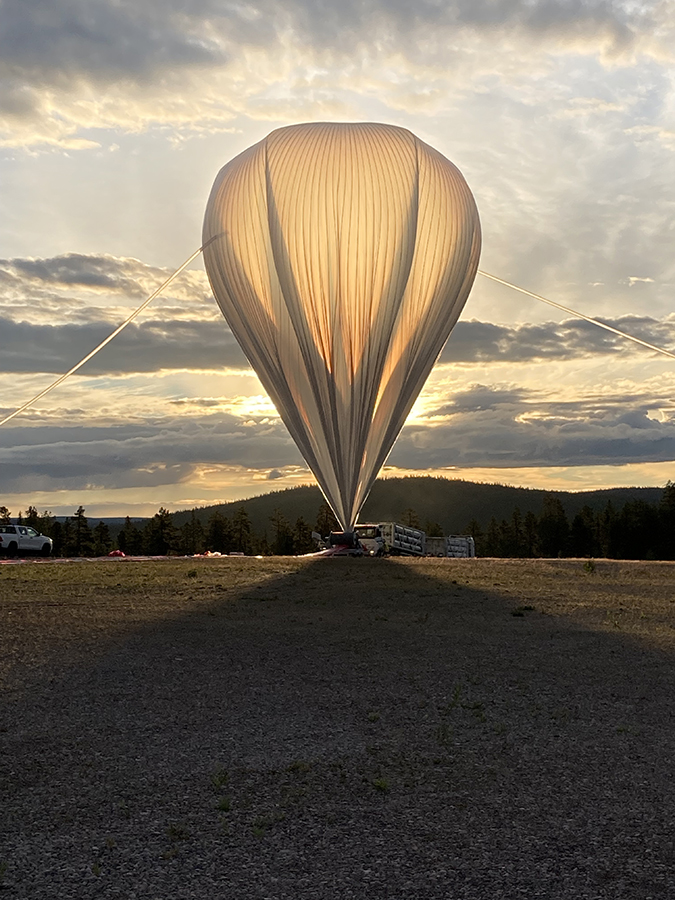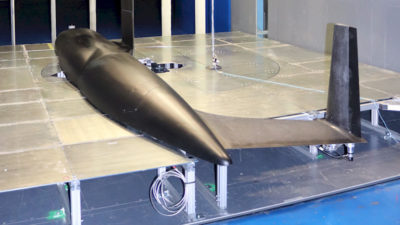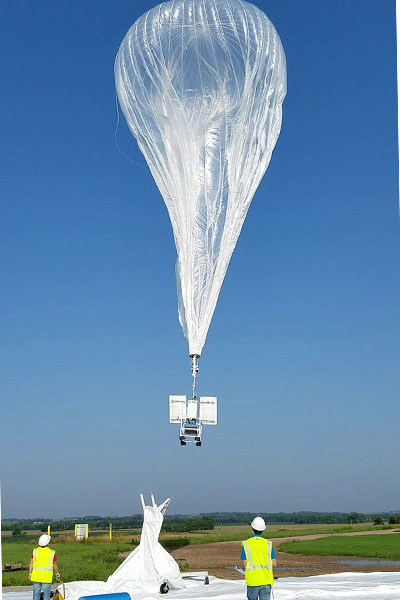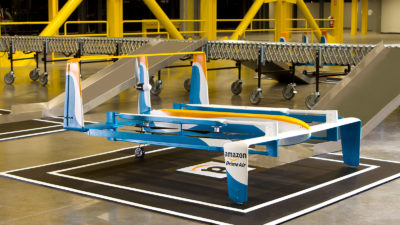Balloon missions soar to new heights
By Sarah Roth and Christopher D. Yoder|December 2022
The Balloon Systems Technical Committee supports development and application of free-floating systems and technologies for buoyant flight in the stratosphere and atmospheres of other planets.
In August, the French space agency, CNES, flew a series of research balloons from the stratospheric balloon base in Timmins in Ontario, Canada. Researchers conducted zero-pressure balloon flights with seven Canadian and 14 European instruments in various research fields: solar physics, astrophysics, atmospheric science, life science and technology. CNES also analyzed data from the first Strateole-2 scientific campaign, which lasted from mid-October 2021 to the end of January. CNES launched 17 pressurized balloons from Seychelles International Airport on the island of Mahé and targeted lower stratosphere (18-20 kilometers) long-duration flights. Strateole-2 is a French-U.S. collaboration to study the tropical tropopause layer using super pressure balloons provided by CNES.
Engineers from NASA’s Jet Propulsion Laboratory, the California Institute of Technology and Near Space Corp. completed a set of test flights of a prototype Venus “aerobot” — an aerial robotic balloon — in the Nevada Black Rock Desert in July. The prototype aerobot is a one-third-scale version of the design planned for Venus. The balloon vehicle was made from a metalized Teflon envelope to survive the acid aerosols of Venus’ cloud layer. Helium pumped between an interior pressurized reservoir and an encasing zero-pressure balloon is designed to modulate buoyancy and control altitude. The prototype aerobot flew twice under altitude control to an altitude of about 1 kilometer above mean sea level and back above Black Rock’s dry lakebed, where the balloon was subjected to similar atmospheric densities as those 55 kilometers above Venus’ surface. The balloon carried instruments and telemetry systems to monitor the aerobot’s performance during the flights.
In July, the NASA Balloon Program Office, BPO, launched the Sunrise III and XL-Calibur telescopes from Swedish Space Corp.’s Esrange Space Center in Kiruna, Sweden. Sunrise III was terminated a few hours after liftoff because the telescope could not be pointed at the sun, and the observatory was recovered in Sweden. As of November, the investigation into the cause of the anomaly was ongoing. XL-Calibur’s flight proceeded as planned. The mission objective was to measure the polarization of X-rays from cosmic X-ray sources in the 15-80 kilo-electron-volt energy range while utilizing the Wallops Arc Second Pointing system. The 12-meter focal length mirror on XL-Calibur was upgraded from the 8-m focal length mirror on X-Calibur flown in 2016 and 2018.
In August, BPO moved operations to Fort Sumner, New Mexico, for the annual summer campaign. Two consecutive flights tested new technologies, piggyback experiments, student opportunities and small atmospheric measurements. The third was the annual flight of the High Altitude Student Platform. HASP is a collaborative effort between Louisiana Space Grant Consortium at Louisiana State University, BPO and the Columbia Scientific Balloon Facility in Texas to provide a testbed for up to 12 student payloads. The most recent launch was Balloon-based Observations for Sunlit Aurora, or BALBOA, in September. BALBOA aims to develop balloon-borne indium gallium arsenide cameras to measure dayside and sunlit auroras and study the dayside and global solar wind-magnetosphere-ionosphere interaction.
Looking toward the future, the U.S.-based Nationwide Eclipse Ballooning Project accepted proposals for student teams to participate in the 2023 and 2024 solar eclipses. This project builds on the successful NASA and National Science Foundation-sponsored National Eclipse Ballooning Project implemented during the 2017, 2019 and 2020 total solar eclipses. Students will be deployed along the eclipse path to livestream video to the NASA eclipse website, observe in situ perturbations in atmospheric phenomena and conduct individually designed experiments by launching several smaller weather balloons.
Contributors: Jacob Izraelevitz and André Vargas



































